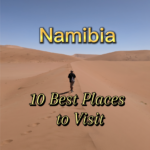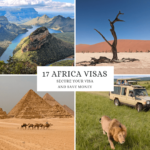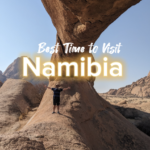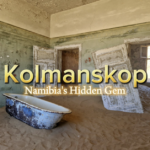Last updated on May 31st, 2024 at 05:32 am
We spent four weeks driving around Namibia, a fascinating country, which has earned the number one rank as “Best Landscapes” on our 9-month Cairo to Cape Town journey.
In this article, we will focus on one attraction in particular, a “must-visit” in Namibia – Etosha National Park.
We experienced a number of safaris on our African adventure but it is seeing such vast wildlife in a desert environment like Namibia that makes Etosha National Park unique and somewhat extra special.
We have done all the work to answer any questions you may have so you can focus all your energy on enjoying your Etosha visit feeling knowledgeable and prepared.
Is Etosha National Park Worth Visiting?
Etosha National Park is undoubtedly one of Namibia’s top tourist attractions.
The park is an incredible place to observe thousands of animals roam freely on the territory over 20,000 km².
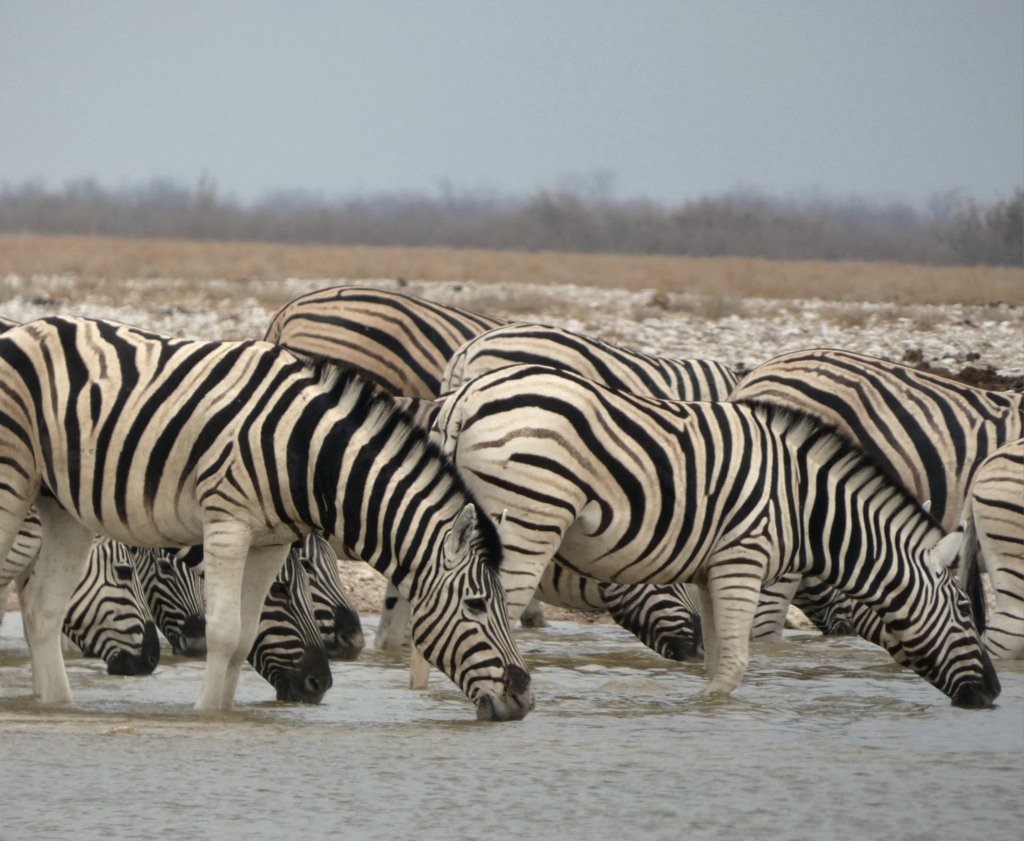
Here, in Etosha, you can see four out of the famous African Big 5 animals; elephants, rhinos, lions, and leopards. The buffalo is the only one that is missing.
However, in total, more than 114 mammal species can be seen in the park, particularly around the numerous waterholes.
If this hasn’t answered the question “Is Etosha National Park worth visiting?”, just wait until you read about the fees below!
Where is Etosha National Park Located?
Etosha is located in the northwestern part of Namibia, surrounding the Etosha Pan, a vast, flat saline desert that becomes a shallow lake during heavy rains.

Getting to Etosha National Park
Getting to Etosha National Park typically involves traveling by road or air, let’s take a look a the different options:
Getting to Etosha National Park From Windhoek:
By Road: Windhoek, Namibia’s capital, is approximately a 4-5 hour drive from Etosha National Park’s southern entrance, known as the Anderson Gate. Take the B1 highway north towards Otjiwarongo. From there, follow the signs leading to the park.
By Air: Some airlines offer flights from Eros Airport or Hosea Kutako International Airport in Windhoek to Mokuti Airstrip, which is near the eastern gate of Etosha National Park. From there, you can arrange transportation to the park.
Getting to Etosha National Park From Swakopmund:
By Road: Swakopmund is further away from Etosha compared to Windhoek, making it about a 6-7 hour drive to the park’s southern gate. You would need to take the B2 and C35 highways eastward toward Omaruru and then northward towards Outjo. From Outjo, follow signs to the Anderson Gate.
By Air: Similar to Windhoek, you can fly from Swakopmund Airport or nearby Walvis Bay Airport to Mokuti Airstrip or other airstrips near the park. However, flights might be less frequent or require more connections compared to departing from Windhoek so make sure you check this out in plenty of time.
Both Windhoek and Swakopmund offer options for car rentals and organized tours to Etosha National Park.
What is There to Do in Etosha?
Etosha has plenty to do – as long as you are interested in watching wildlife that is. It is a wildlife reserve after all!
Game Drives: The park is famous for, you guessed it, game viewing! Take self-drive safaris or join guided game drives to explore the park’s diverse wildlife.
*Just a warning – The roads are quite corrugated within the park, we were shocked by how corrugated they were, so do your spine a favor and rent an SUV for your own comfort.
Waterhole Watching: Spend time at the park’s numerous waterholes. These spots provide excellent opportunities to observe animal behavior as they come to drink, especially during the dry season where you can spot animals such as elephants, lions, rhinos, giraffes, zebras, and various antelope species.
Due to the corrugation and the fact we did not rent an SUV, we spent a lot of our time at waterholes.
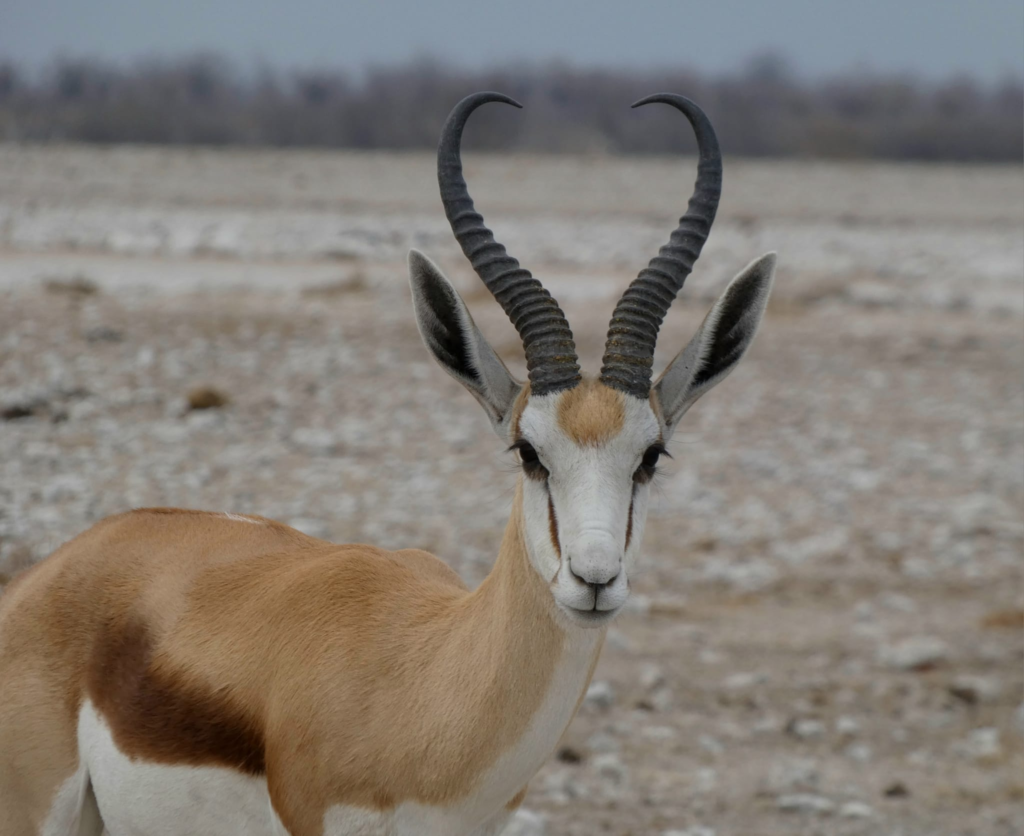
Photography: Etosha is a stunning landscape and a haven for photographers so make sure you have that camera charged and enough photo storage on your phone!
Bird Watching: Birdwatchers get the chance to observe over 340 diverse species, including flamingos, raptors, and ostriches, particularly during the wet season (November – April)
Stargazing: The park’s remote location away from city lights makes it an excellent spot for stargazing. This is our favorite past time and at night time you are almost guaranteed a view of the amazing Milky Way here.
Cultural Experiences: You will see local people from the Himba tribe around Etosha. Often lodges organize cultural visits to nearby communities, where you will learn about traditional lifestyles and cultures. Make sure to enquire about such trips with your accommodation.
Relaxation: The best thing to do after a day of exploring is to enjoy the serene and peaceful atmosphere of the park’s rest camps or lodges. Some accommodations offer swimming pools and relaxing facilities to unwind after a day of exploration. Trading Post is one of those campsites, and very cheap!
You’ll need at least two days in Etosha to explore the area but staying here for longer is a good idea.
Etosha National Park Accommodation: Where do I Stay in Etosha?
The best is to stay inside the park at one of the six campsites. Each campsite has a camping area, a restaurant, a shop, and a bar. If you don’t like camping you can stay indoors as each site also offers bungalows/lodge options.
If the campsites inside the park are full and indoor accommodation is too pricey you can stay just outside Etosha at Etosha Trading Post Campsite, 4 km from the Anderson Gate.
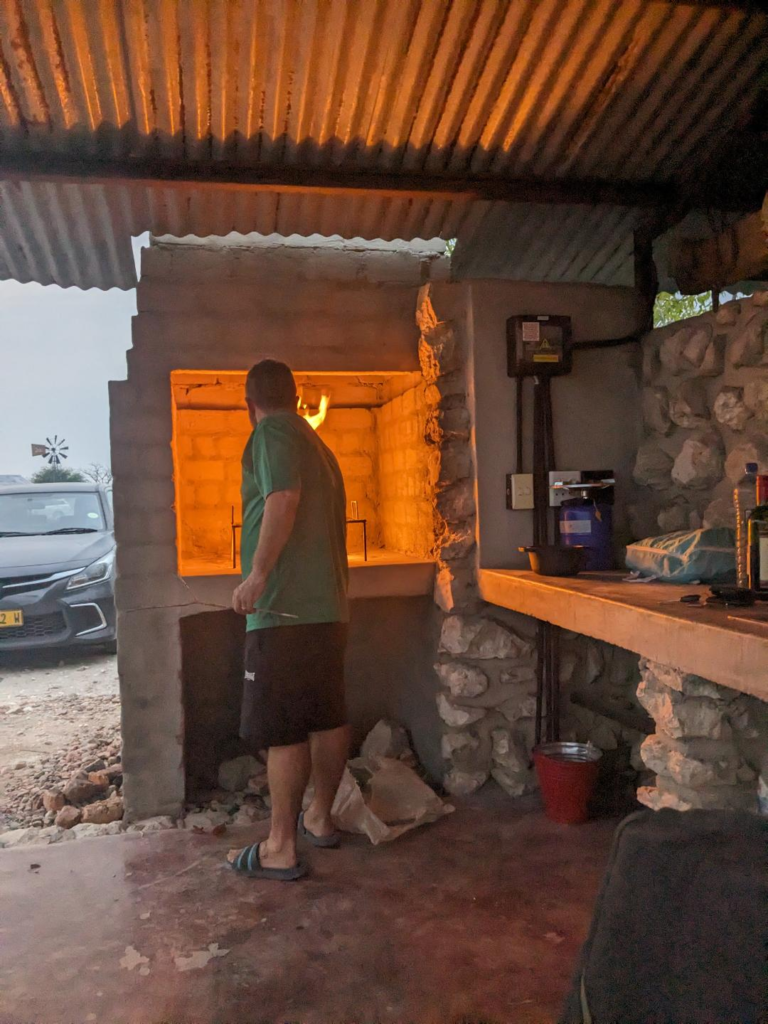
This is where we stayed and we loved it! It also offers a shop, restaurant, bar, and even a swimming pool!
We felt it was more of a glamping experience than camping!
Etosha Luxury Accommodation
If camping is not your thing, then it is also possible to stay in a luxurious resort spa or hotel, but be warned they do not come cheap!
Two of the most popular luxury options include:
Mokuti Etosha borders Etosha and is situated a mere 40 meters from Von Lindequist gate entrance of the Etosha National Park. It offers 2 outdoor pools, 2 floodlit tennis courts, a spa and a gym.

There is also a brand new pool bar and an evening bar for drinks and snacks. The 24-hour reception staff can arrange game drives, night drives, sky safaris & give information on the walking trails and bushmen bushwalks.
The Mushara Outpost features an outdoor swimming pool, garden, a terrace and restaurant in Namutoni.

The property is located within 16 km of Onguma Private Game Reserve, and most importantly, both breakfast and Dinner are included in the cost of your stay – that sounds pretty good to us!
What are the Etosha National Park Fees?
Gate opening hours – sunrise to sunset
Admission fee – NAD 150/US$10 per person, NAD 50/US$3 per car (10 passengers or less).
Under 16 years – FREE!
When is the Best Time to Visit Etosha National Park?
For a successful animal sighting, visit Etosha during the dry season between May to October when animals are easy to spot at the waterholes.
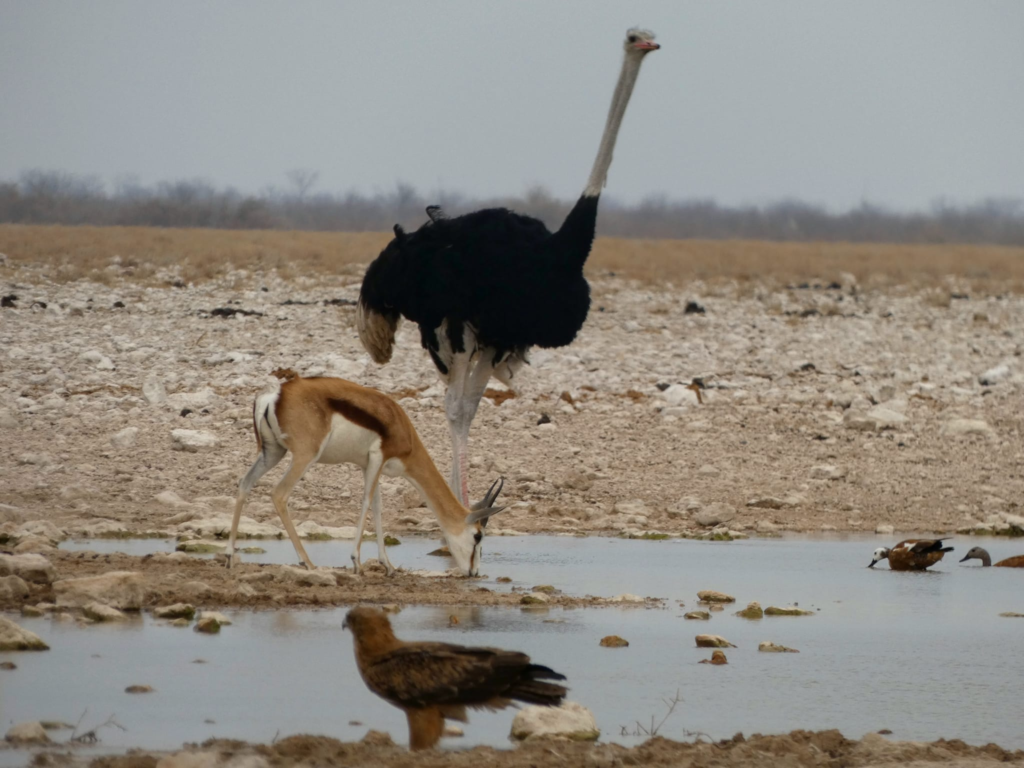
Overall winter (the dry season) is the best time to visit Namibia.
What Do I Need to Bring to Etosha National Park?
What to bring differs incredibly if you are staying in a luxury safari lodge or camping like us but let’s check out some basics nonetheless:

- Clothing: Light, breathable clothing for hot days, a hat, and sunglasses to protect from the sun.
- Warm clothes for the cooler nights.
- Binoculars and Camera: For wildlife viewing.
- Sunscreen and Insect Repellent: To protect against sunburn and insects.
- Water: Stay hydrated, especially during game drives and walks.
- Comfortable Walking Shoes: Suitable for walks and exploring around the park.
- First Aid Kit: Including basic medical supplies.
- Valid Identification and Travel Documents: Such as a passport, park permits, and any required documentation.
- Map or GPS: To navigate the park’s roads and trails. These can get confusing.
- Snacks and Food: Especially if you plan to self-drive and explore remote areas as there may not be any shops for a long time.
- Torch/Flashlight: Useful for nighttime activities and walking around campsites.
- Toiletries: Bring essentials like toiletries, hand sanitizer, and any personal medications you might need.
- Appropriate Camping Gear (if camping): Tent, sleeping bag, cooking equipment, etc.
For our full list of travel essentials click here.
Enjoy Etosha National Park!
It is always an out-of-this-world experience witnessing wildlife in their natural habitat and Etosha National Park is no exception.
Now that you hopefully have all your questions answered, you can sit back and enjoy this unique and incredible experience in one of Africa’s most incredible countries.
If we have missed any of your questions please don’t hesitate to get in touch and let us know.
If you have any questions then leave us a comment below, and don’t forget to check out our socials.
Slán go fóil


This post contains affiliate links. If you click on the links to make a purchase, we will earn a small commission. This is at NO EXTRA COST to you. This is a free way to support us and allow us to continue to create inspiring adventure travel guides.


